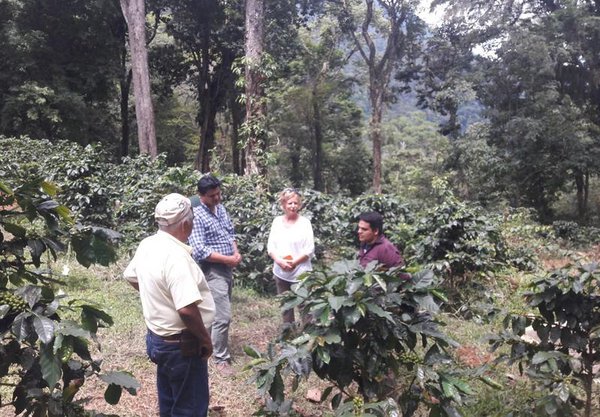- Share this article
- Subscribe to our newsletter
Agroforestry and the landscape approach: connecting conservation and farming actors
Increasingly intensified, weakly structured agriculture is spreading in tropical rainforests, threatening biodiversity and measures to combat climate change. Therefore, integrating nature conservation in agriculture is of crucial importance.
Agroforestry systems, in which trees are combined with crop plants or animal husbandry, hold a major potential to establish nature conservation targets as part of agricultural systems. Researchers headed by the University of Göttingen and the Helmholtz Centre for Environmental Research, Leipzig, both in Germany, have demonstrated which incentive systems can promote these agroforestry systems, and hence nature conservation, in agricultural areas in developing countries in the tropics. The results of the survey were published in the specialist journal Sustainability Science in September 2020.
One central challenge in implementing agroforestry systems is that political processes concerning biodiversity and sustainability are frequently largely disconnected from the farmers and local actors who are responsible for looking after the trees.
In the four countries of Peru, Honduras, Uganda und Indonesia, the scientists conducted surveys at national, subnational and local level with the aid of focus groups. In all case studies, existing agroforestry groups and interaction between the various groups regarding sharing of information, finance flows and regulation were analysed quantitatively and qualitatively.
“We observed that all groups are associated with trees, and participants can thus overcome institutional and ideological obstacles to integrative nature conservation,” says Dr Yves Zinngrebe, lead author of the survey and researcher at the University of Göttingen and the Helmholtz Centre for Environmental Research, Leipzig. “We arrived at the conclusion that one important step would be to gear the existing governance and financing systems more towards supporting agroforesty.”
Transformation into “good agriculture” incorporates agroforestry
According to the team, three central aspects could promote the transformative governance of agricultural landscapes.
First, a perception of what “good agriculture” is has to include agroforestry. This would raise acceptance of and responsibility for sustainable agriculture. An example from Honduras shows that now, given climate change and drought, livestock keepers accustomed to “clearing” pastureland and open countryside were keen to make use of trees to regulate ecosystem services.
Universities, research centres and NGOs as well as agricultural and forestry extension services can provide capacity building and demonstrate the ecosystem services provided by agroforestry, such as shade, wind breaks, fruit provision and (commercial) timber.
Second, implementing agroforestry-specific instruments requires supplementary structures for regulating, financing and information. While private initiatives as well as local credit programmes support agriculture, they create considerable hurdles for agroforestry. The scientists recommend that existing technological expertise, financing options and legal frameworks for agroforestry be backed and integrated in local governance structures.
Third, the various groups have to develop solutions to ecological and economic challenges in adaptive learning processes. Farmer decisions are not only influenced by extension services, but also have to comply with requirements set by markets and credit institutes. “Existing platforms and cooperation schemes should be used to coordinate governmental and non-governmental efforts for joint implementation processes and institutional learning with a clear vision and mandate for agroforestry. Particularly bridging actors such as farmer associations and local governments play an important role in facilitating such processes,” Zinngrebe maintains.
(University of Göttingen/wi/mg)
Original publication: Zinngrebe, Y., Borasino, E., Chiputwa, B., Dobie, P., Garcia, E., Gassner, A., Kihumuro, P., Komarudin, H., Liswanti, N., Makui, P., Plieninger, T., Winter, E., Hauck, J.. Agroforestry governance for operationalising the landscape approach: connecting conservation and farming actors. Sustainability Science (2020). Doi: https://doi.org/10.1007/s11625-020-00840-8





Add a comment
Be the First to Comment